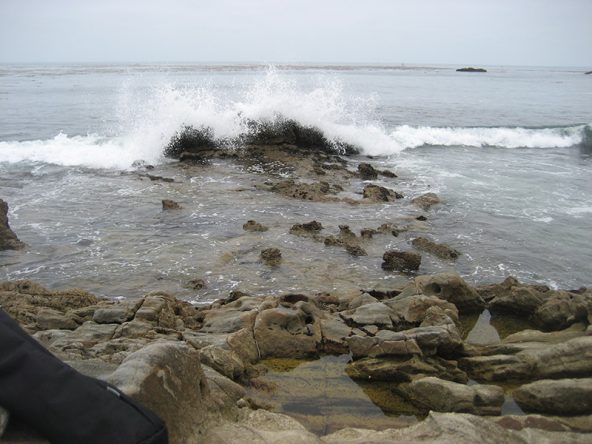Sally Streib gives you photos and videos to go with her story in this week’s issue of Guide magazine.
To see the bonus material from last week’s story here.
See bonus photos from the next installment of The Girl God Rescued here.
After living in all the comforts of a multi-million dollar home, I wondered if I
would enjoy tent life on a beach. But thoughts of a new adventure excited me. Once
I got used to the idea that the waves wouldn’t gobble me up while I slept, I
became interested in discovering what creatures might live around me.
Along the California coast, the toes of rocky cliffs intersect the curved sandy
beaches. Rocks fall from the cliffs into a jumble of clutter at the bottom, forming
protected places where seawater collects. These are called tide pools because
the higher tides fill them as waves rush in.
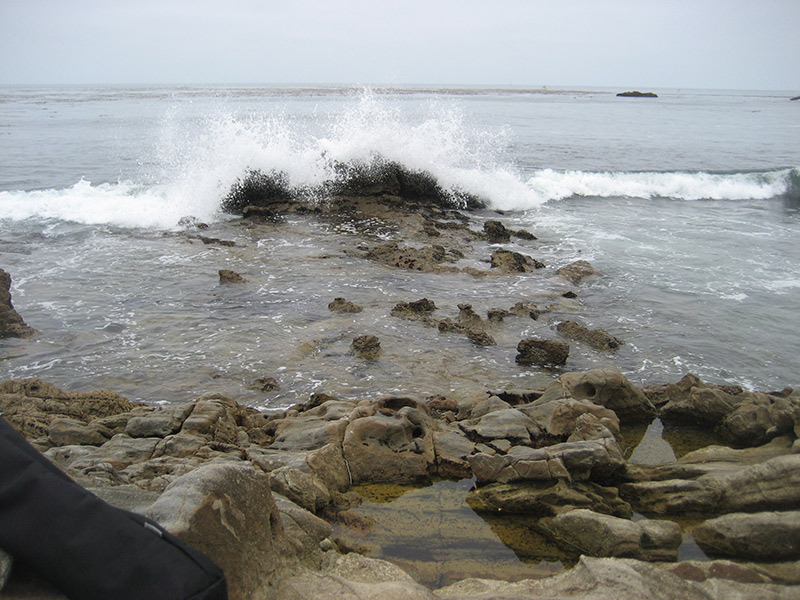
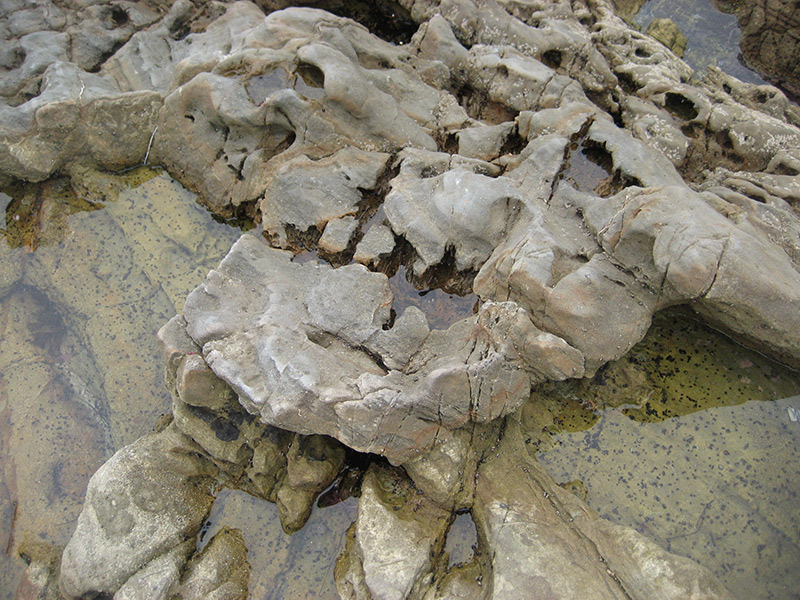
Tide pools
At first, I joined many people who
walked the sandy portions of the beach looking for shells. I found a few clams,
jingle shells, and beach-worn limpets.
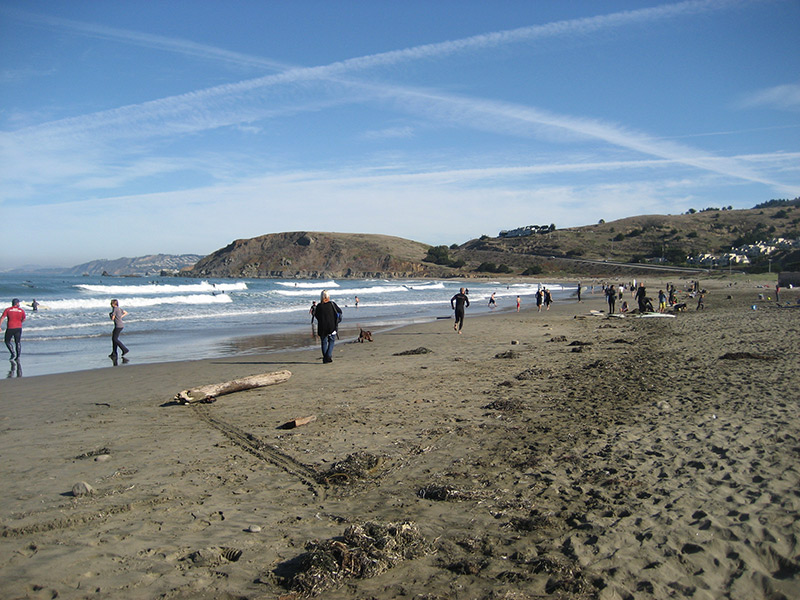
People shelling
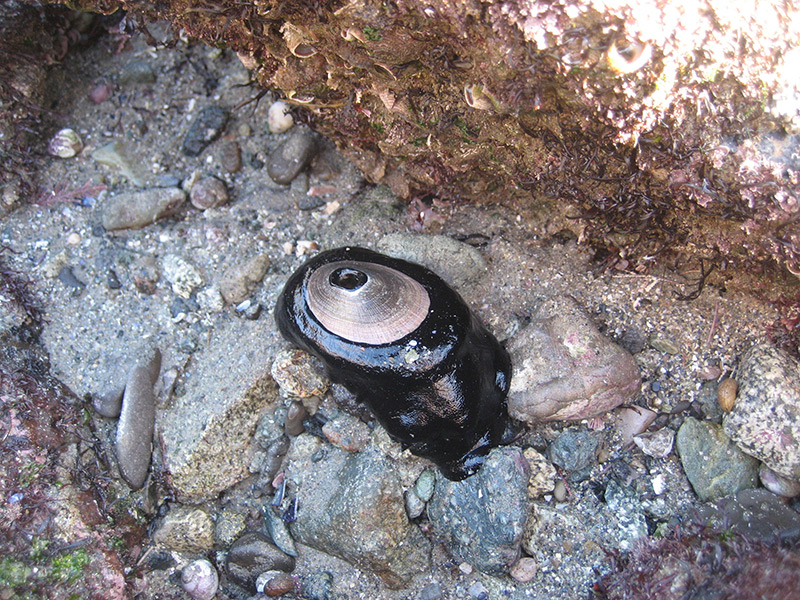
Keyhole limpet
It
didn’t take me long to learn that the greatest variety of creatures lived
within the tide pools. I marked my calendar for the lowest tides, called minus
tide. At this time, the sea pulls back and exposes acres of wonderful pools. I
discovered giant green anemones, sea stars, little black top shells and even
miniature, resident fish.
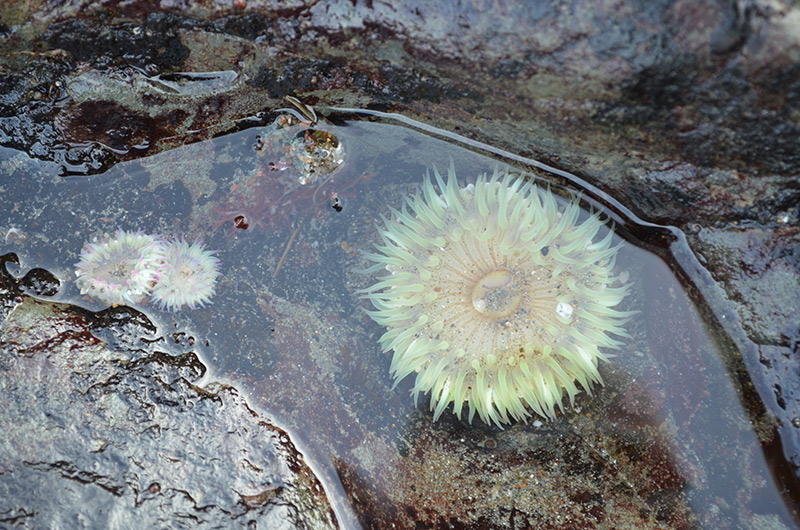
Giant
green anemone
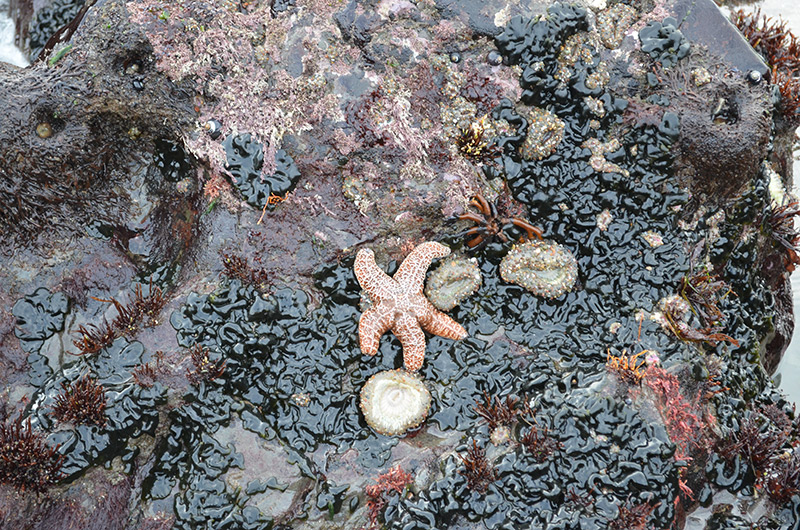
Sea
star
I
learned to turn over rocks and replace them carefully. I also figured out the
best way to lift a rock. I’m going to share this information with you so you won’t
get an octopus in your face! (This actually happened to me! A small, red octopus
jetted out from under a rock I had turned over and flew right into my face. I
fell over backwards and when I hit the water the octopus took off for cover
beneath a nearby rock!)
Here’s
how to find sea creatures. First, choose a rock that isn’t pushed deep into the
sand. Creatures don’t live under these rocks because they need little spaces to
hide in or ledges to cling to. Reach across to the far side of the rock and lift it toward you a little. Pause a second before pulling the rock back so
you can see what lives there. Whatever is hiding there will dash away from your
face and not right into it.
Write
down the names of each creature you see or sketch a picture. You could also
take a photo; you may want to look it up later in a field guide. The more you
learn, the greater enthusiasm you will have to discover more.
I
used to pass by little limpets that clung to the rocks until I learned that at
night, hundreds of these tiny abalone-like creatures slide down the face of the
rocks scraping up algae. They encounter hundreds of other limpets in the
darkness, yet they each find their way home to the little space they have
etched out in the rock high above the ocean. They can do this because each one
puts down a chemical trail that it can “read” and follows it home.
It
was during the time that “The Girl God Rescued” was happening that I made an
important decision. I decided that a loving God takes care of the creatures He’s
made—and that included me. Knowing this made me smile a lot and stirred my
desire to go out and learn more.
—Sally Streib
All photos by Sally Streib (
Sally@seansee.net) and Clyde Thomas and Reggie Thomas (MomentsInNature.org).

